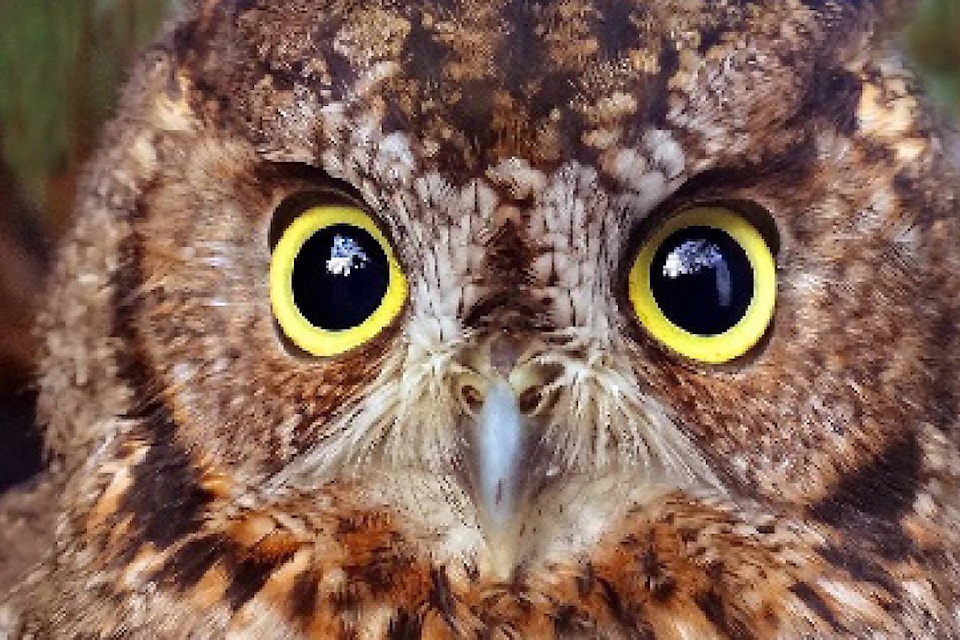Researchers and “citizen scientists” will take to wooded areas in the Greater Victoria region this year in an effort to help save endangered western screech owls.
The project, sponsored by the Habitat Acquisition Trust, uses biologists and volunteers to learn about the small owls. Just 20 of the birds are thought to exist in the region.
February to April is the screech owls’ breeding season and volunteers listen for their distinctive courtship calls in areas where they have been known to nest in the past.
Researchers will also use automated recording units, which record the audible sounds of the birds. The devices are located in areas where screech owls have been heard, said Paige Erickson-McGee, HAT’s community and development coordinator.
“It’s much more comprehensive data when we can record in a certain area for a number of weeks,” she said, adding researchers have learned quite a bit about the behaviour of the owls.
LISTEN UP: Western screech owl calls
Researchers, for instance, have discovered western screech owls may not call for a week and then call out constantly for one day.
But listening for screech owl isn’t just for science professionals. Last year, more than 40 volunteers spent 54 hours and travelled 60 kilometres of survey route to discover four areas where the owls were active.
The groups usually include a biologist when they travel to wooded areas in the evening and listen for owl calls.
“We’d like to see more citizens out there listening for owls and reporting them. People don’t need to be part of a group. They can listen from their porch on when walking in wooded areas. We really rely on the community to look for them,” Erickson-McGee said.
Once commonly heard in Greater Victoria, western screech owl numbers have decreased by more than 90 per cent over the last 10 years.
There are several reasons: habitat loss due to development, an increased population of barred owls, which hunt their smaller cousins and rodenticides which have been found in the bodies of most owls, said biologist Tanya Tripp, who has been part of the program for three years.
But the HAT program is vital in saving the birds, she said.
“It’s beyond just a feel good project. It’s actually making a difference.”
In addition to its census activities, the HAT staff work with landowners to encourage conservation of suitable habitats where owls can breed and find food.
HAT volunteers have also begun building and installing nest boxes for owls that can be monitored in future years to gauge the success of the program.
Two of the boxes have become home to breeding western screech owl pairs.
Anyone wanting to become a citizen scientist – by listening for hoots, building nest boxes, or helping in other ways – is asked to go online to hat.bc.ca for more information.
editor@sookenewsmirror.com
Like us on Facebook and follow us on Twitter
SIDEBAR
The search for the western screech owl is centered in the Highlands and the Capital Regional District watershed area, but one bird was accidentally captured at the Rocky Point Bird Observatory during an owl banding last year.
Western screech owls, which stand about seven to 10 inches high, prefer old-growth forests because they like to nest in tree cavities dug out by woodpeckers and other birds.
“There’s certainly potential habitat in the Sooke Region,” said Paige Erickson-McGee, HAT’s community and development coordinator.
“It’s more that we don’t get a chance to get out there as much as we like. We’d love for Sooke residents and other folks to be listening for owls out there.”
